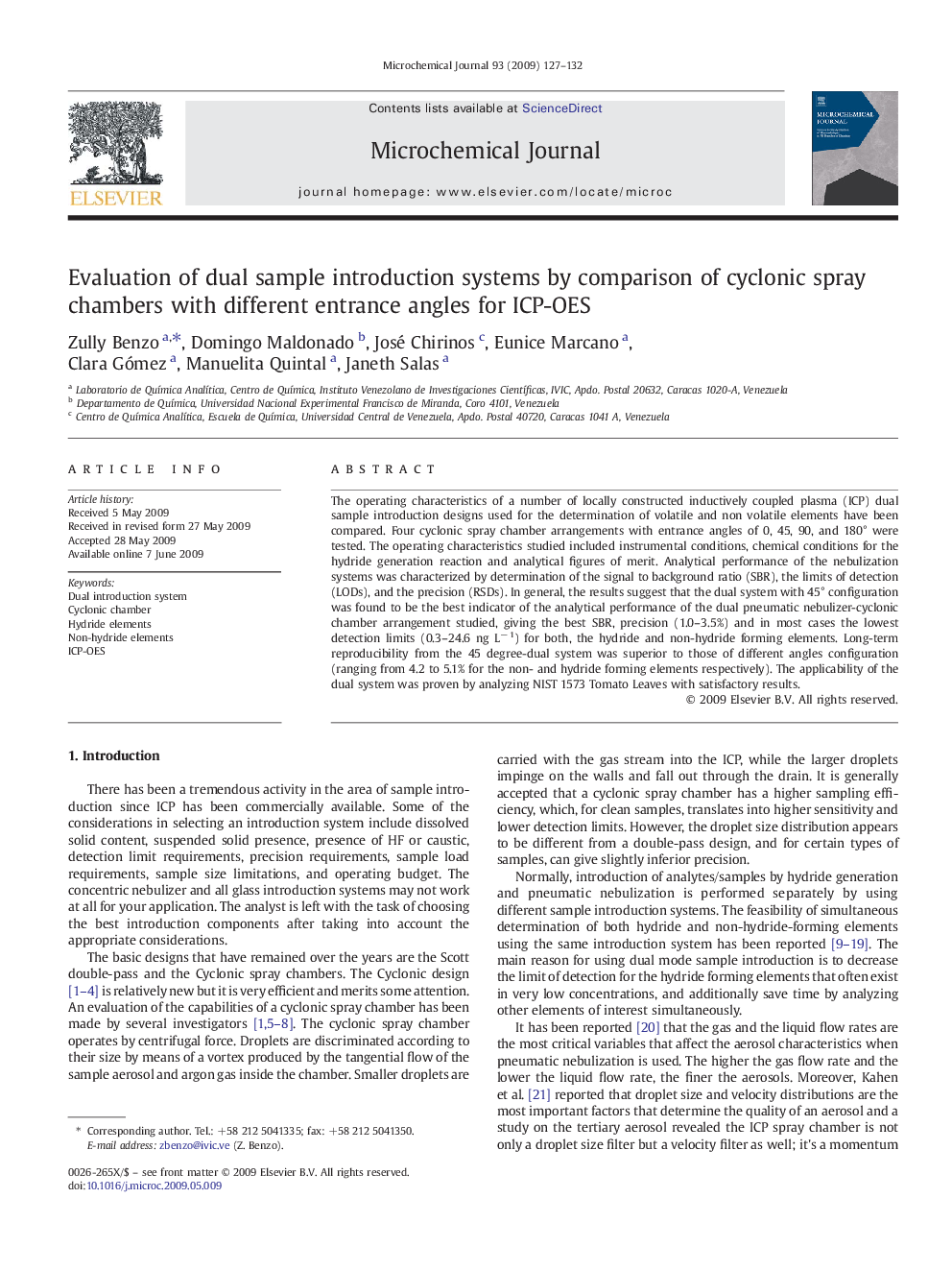| Article ID | Journal | Published Year | Pages | File Type |
|---|---|---|---|---|
| 1228054 | Microchemical Journal | 2009 | 6 Pages |
The operating characteristics of a number of locally constructed inductively coupled plasma (ICP) dual sample introduction designs used for the determination of volatile and non volatile elements have been compared. Four cyclonic spray chamber arrangements with entrance angles of 0, 45, 90, and 180° were tested. The operating characteristics studied included instrumental conditions, chemical conditions for the hydride generation reaction and analytical figures of merit. Analytical performance of the nebulization systems was characterized by determination of the signal to background ratio (SBR), the limits of detection (LODs), and the precision (RSDs). In general, the results suggest that the dual system with 45° configuration was found to be the best indicator of the analytical performance of the dual pneumatic nebulizer-cyclonic chamber arrangement studied, giving the best SBR, precision (1.0–3.5%) and in most cases the lowest detection limits (0.3–24.6 ng L− 1) for both, the hydride and non-hydride forming elements. Long-term reproducibility from the 45 degree-dual system was superior to those of different angles configuration (ranging from 4.2 to 5.1% for the non- and hydride forming elements respectively). The applicability of the dual system was proven by analyzing NIST 1573 Tomato Leaves with satisfactory results.
